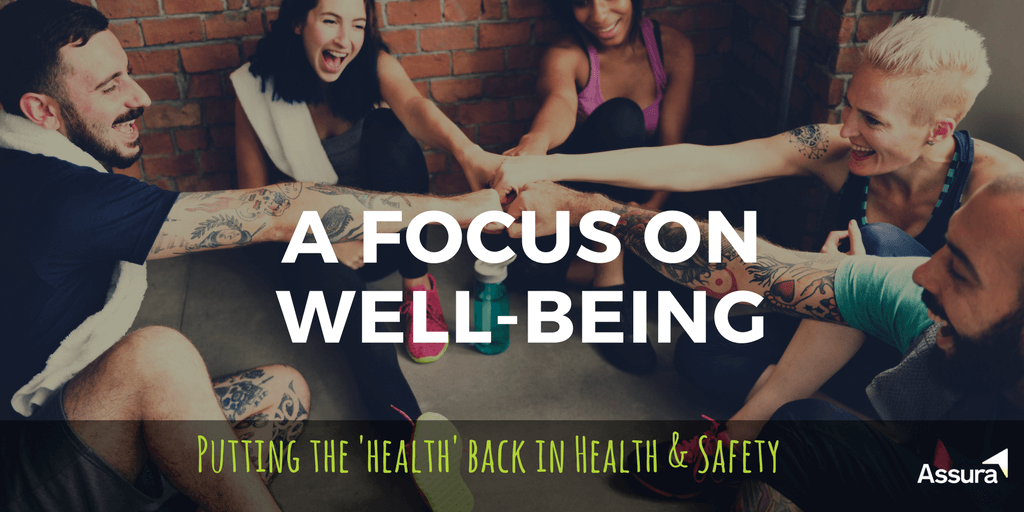
GOING BEYOND PHYSICAL SAFETY & LOOKING AT EMPLOYEES HEALTH + WELL-BEING
A New Zealand employee is 10 times more likely to die from a work-related disease than a work-related accident. That’s a pretty clear signal that we need greater accountability and leadership around health and well-being. So what does this means for business leaders and their responsibility to make sure that workers not only get home safe, but are healthy too.
Ten, 10, X times – no matter how you express it that’s not a cheery fact.
During a recent Safeguard conference, I was reminded of renowned health and safety expert Lawrence Waterman’s phrase ‘we shout safety and whisper health’. This got me thinking. Why? And, what are the implications for New Zealand businesses?
Work-related health isn’t a new issue, but it doesn’t get the same emphasis that’s put on safety. Maybe it’s because injuries caused by accidents are easily recordable and usually visible – so it comes back to that journalist maxim “if it bleeds, it leads”.
By that measure it’s pretty hard to gauge the impact of ill health due to asbestos, toxic fumes, noise or other hazards. Or illness caused from stress, fatigue or overwork. Not only is ill-health harder to quantify but there’s usually a longer period between a worker’s exposure and then the subsequent effects on their health. This lowers the perception of risk and makes accountability difficult. I reckon, there’s also a perceived complexity of managing employee well-being; that data is limited and unreliable, and loose terminology around what health issues are equated to work versus lifestyle.
Then, just to keep it interesting, there’s the added health complexity that comes with an ageing population of workers.
In short, its often easier for work-related health issues to remain unidentified or, at best, an ‘elephant in the room’, largely due to a general lack of awareness or it’s place in the ‘too hard’ basket.
Like it or not, employers can’t ignore ‘the health thing’
The latest available data estimates up to 900 New Zealand workers die each year from diseases caused by work-related health risks. The same research states 30,000 people develop non-fatal, work-related ill health every year – such as noise-induced hearing loss or lung disease. In a population as small as ours, this is worryingly significant.
But, we are starting to see a renewed focus in this area. How it’s implemented is yet to be seen, but the government’s recently-released 10-year ‘Healthy Work’ strategic plan aims to ensure employee health is given the same priority as physical safety.
Business leaders and workers are being encouraged to collaborate and recognise exposure and harm as opportunities to improve risk management for safety related illness with the same level of care as injury.
Here at Assura, we’re also seeing many of our clients invest in voluntary measures to improve workforce well-being – going beyond the mandatory duties laid out in the Health and Safety at Work Act 2015.
Since we know our client’s well, we know it’s not just about that lovely word ‘compliance’ – these are Kiwi companies who genuinely care about the health of their staff. Our client Hellers has ensured that ‘well-being’ is a core part of their Health and Safety Programme. In fact, they want to make their workplace ‘move like Jagger’. You gotta read it.
Show me the money
Of course. The economics. We’re in business to help businesses, not suggest practices that hamstring them. So hands down, when it comes to employee health, looking after your people benefits everyone. You, them, morale, and the bottom line.
Worksafe estimates the average cost of lost productivity over a typical worker’s career for each case of work-related ill health is $44,500. You’re not getting a decent car, and neither are they. It’s just waste and lost performance opportunity.
This is even more important when we consider the impact of people doing sedentary jobs – sitting for long periods, monitors at the wrong height, poor posture, and the list goes on.
Humans were built to move, but we’re now moving less than ever before. International research shows that the average office worker spends about 80,000 hours of their working life sitting down, and 80 percent of those who work at a computer every day regularly suffer from health conditions.
This silent double-sided epidemic costs everyone
Ill-health affects our business and our workforce. I’m not sure how long it remains ‘silent epidemic’ here. All we need to do is look to the US (with much self-control and many deletions, I make no reference to Trump) to see an armada of lawyers looking to justify their existence. By that, I mean chase the next ambulance. I suspect, it’s only a matter of time before we see some local class action suits – “Office workers forced to sit at desks for 30 years and now have 30% higher incidents of arthritis and RSI than the general population”. Or something like that.
Improvements in technology and innovative health and safety systems should help businesses do better to manage work-related health risks, and in turn, minimise the associated financial impact. Systems are essential for capturing, analysing and reporting data to get a better understanding how work conditions affect health. How many companies really know the frequency of exposure and subsequent impact on worker health? As measuring these often falls under productivity measurement software. Which doesn’t leave a lot of room for health.
While I’m passionate automated systems are the only way to effectively manage a workforce, technology can only go so far.
Businesses have to come to the party and acknowledge the issue and work together on solutions to improve work-related health through proactive leadership and management.
In many instances, it’s literally a case of getting off your backside and starting to move.
Talk to us about how we can help you look beyond just ‘following the law’, and use systems and tools to create not only a safe, but a happy and healthy workplace for your employees.

